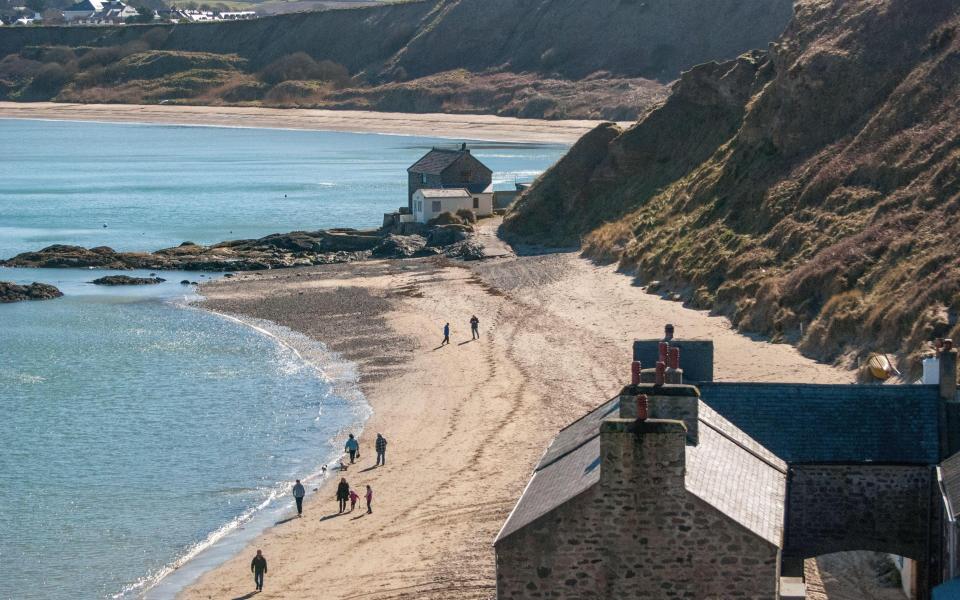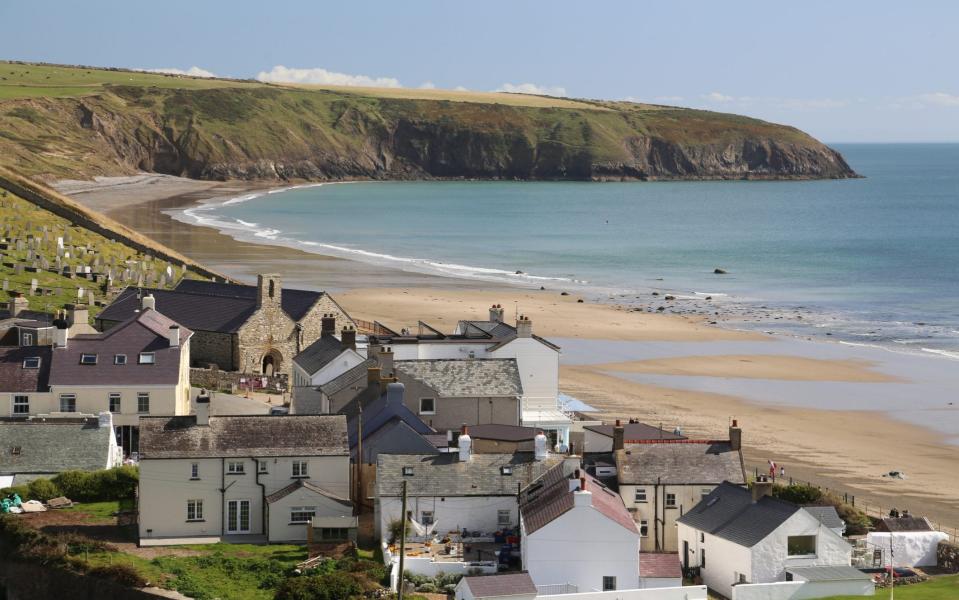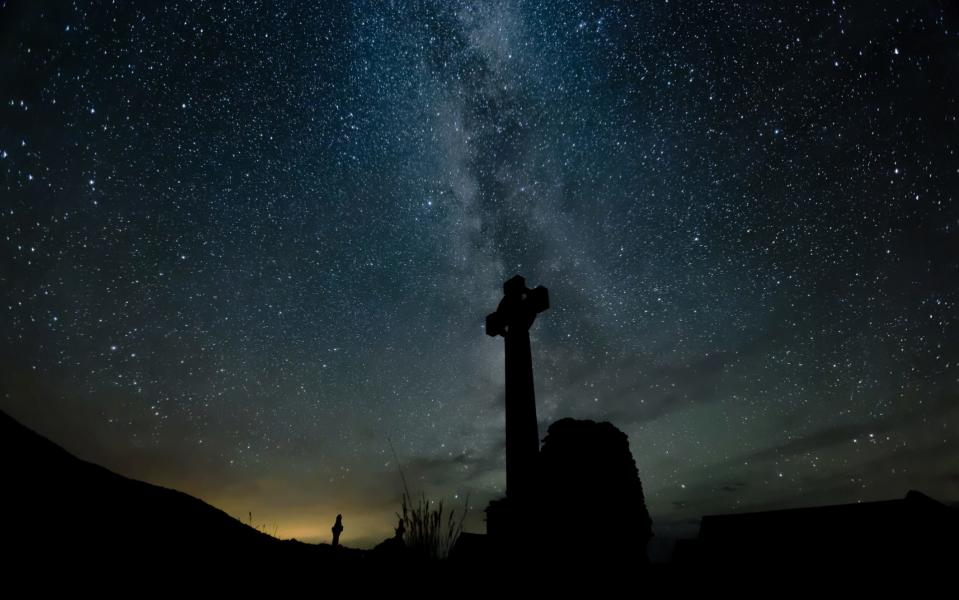This timeless Welsh island of puffins, seals and saints is the perfect post-lockdown escape

It’s the ultimate destination for social distancing: an island off the tip of the Llyn Peninsula, North Wales, with a couple of wardens, a colony of basking grey seals and a host of migrating seabirds. But, as Wales celebrates its patron saint, David, today, a journey to Bardsey Island offers more than just splendid isolation on a national nature reserve. It’s a myth-shrouded odyssey into Wales’ 12th-century golden age of pilgrimage.
When Pope Callixtus II decreed three pilgrimages to Bardsey to be equivalent to one to Rome, it sparked a faithful scramble to the remote Llyn Peninsula that lasted until The Reformation. The medieval writer Gerald of Wales first noted the large number of pilgrims blazing a sandal-clad trail to Bardsey in 1188, many of them believing that to die on the island idyll would guarantee them a place in heaven. That’s why Bardsey is still known as the isle of 20,000 saints.
I spent three days walking the trail before lockdown, embarking on my own private pilgrimage in the footsteps of the ancient saints. The route now forms part of the North Wales Pilgrims’ Way from Holywell to Bardsey, a route peppered with the ancient stone cairns, sacred springs and pilgrim churches, but I was focusing on the later stages. Based in self-catering accommodation in Aberdaron, I followed the Wales Coast Path, tackling a series of day walks and circular trails, before embarking on the wave-washed boat trip across Bardsey Sound.
“Bardsey comes at you with all the senses: the sound of nature, the view west across the sea with the mountains behind, and the sense of ancient spirituality,” says Peter Hewlett, who arranges walking trips around the Llyn. “It feels defiantly lost in time.”

Stepping out
The first stage started from the Nant Gwrtheyrn Welsh Language and Heritage Centre and hugged the coastal path of the northern Llyn headland. I soon found my mind calmed by the rhythm of my footsteps and the sight of the natural landscape, the Atlantic swells below, and the ruined Methodist churches and rustic farmsteads that dotted along the trail.
The ancient Celtic saints always felt close. The humble single-nave Church of St Bueno, in the tiny hamlet of Pistyll, was a regular pilgrim pit stop. The garden was given over to growing medicinal plants to treat the sick and infirm visitors and remains a fragrant herb garden today. As I opened the thick wooden door, I was transported back to the Middle Ages by the aroma of the interior — the rushes and evergreens a throwback to the medieval practice of strewing herbs on the floor to fend off infection. I finished the day with a sundowner on the beach at Porthdinllaen. The Ty Coch Inn dips its toes into the waters of the bay for a pint of local ale with the ultimate sea view.

The next day was based around a more remote, rural section of the trail, via the beach at Whistling Sands, where the white sand squeaks as you walk on it, before rounding the windswept headland at the tip of the Llyn for my first view of Bardsey on the horizon. I then cut back inland to descend towards the village of Aberdaron. Here, the 14th-century inn, Y Gegin Fawr, was the last meal stop for pilgrims before heading onto the church of St Hywyn and the treacherous boat trip.

The Welsh poet R.S. Thomas made Aberdaron his parish from 1967 to 1978 and his dark poetry perfectly captures the ends-of-the-earth feel of the village with sparse, spindly verse. The National Trust has plans for his retirement cottage in the grounds of the Regency manor house, Plas y Rhiw, while Aberdaron hosts an annual festival of poetry to celebrate Thomas’ anti-hero legacy (running online this year at rsthomaspoetry.co.uk).

Saintly spirits
Boat trips to Bardsey are highly weather dependent but I struck lucky the next day and joined a handful of birdwatchers on the weather-tossed crossing to find a welcoming committee of Manx shearwater and puffins. The ancient Celts thought this place could be Avalon, the last resting place of King Arthur, whose story is recounted in The Mabinogion, the 12th-century book of Welsh folk tales. St Cadfan later brought the Celtic Christian tradition from Brittany to build the first remote monastery here in the sixth century and the site was finally occupied by Augustinians, who combined spiritual devotion with farming on their isolated island outpost.
I followed the dirt track to the ruins of their 13th-century abbey, St Mary’s, and knelt before the Celtic cross, the spirits of the 20,000 martyrs that died on the island, absolved of sin having traversed the rugged landscape of North Wales, swirling around me. The end of my own personal pilgrimage was close.

Back on dry land, I joined Peter Hewlett for a look the exhibition devoted to R.S. Thomas at his former parish church in Aberdaron. While the ancient saints like David and Cadfan brought ancient spirituality to Bardsey, it is Thomas who is the keeper of its spiritual soul. “Thomas had a deep and personal relationship with the island as the first chairman of the Bardsey Island Trust,” he said. “He loved the idea of the island as an ecosystem of a simpler age.”
We stood in the graveyard, overlooking the sea, and Peter read a passage from Thomas’ poem, Pilgrimages:
There is no time on this island.
The swinging pendulum of the tide has no clock; the events are dateless.
These people are not late or soon; they are just here…
How to do it
Edge of Wales Walk (edgeofwaleswalk.co.uk) has maps and walking guides available free for guests booking their self-catering accommodation in Aberdaron. Glandwr sleeps six and costs from £615 (www.aberdaron-glandwr.co.uk) in June; One Dolfor sleeps four and costs from £1160 (www.onedolfor.co.uk) at that time. Boat trips to Bardsey cost £35 per adult via bardseyboattrips.com. Details of virtual events for St David’s Day from Visit Wales (wales.com/gwyl-dewi-wales-celebrates).
Read more: Great British Getaways: 10 amazing holidays in Wales to book now, plus our complete guide to the best hotels in Wales.


